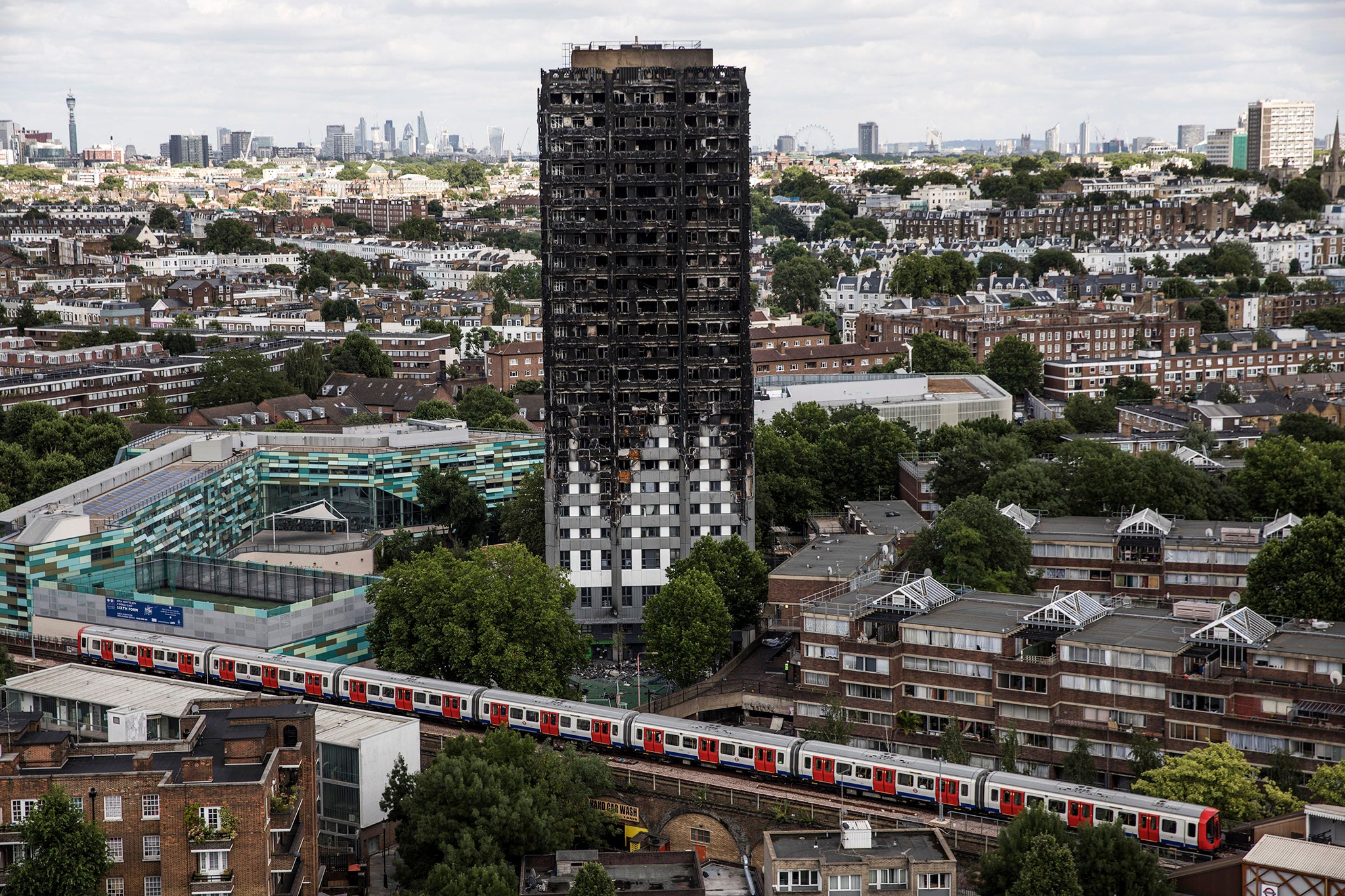No more excuses – fix all of the nation’s tower blocks
Editorial: It will be at least a decade after the Grenfell fire before those who deserve punishment find themselves in court. For now, the full resources of the state must be put towards making Britain’s high-rise homes safe

The Grenfell disaster need not have happened. The final report into the tragedy shows that the deadliest residential fire since the Second World War was clearly avoidable, and the lives of 54 adults and 18 children need not have been lost.
In the words of the inquiry chair, Sir Martin Moore-Bick, the people who lived in the tower block were “badly failed over a number of years”, with general warnings ignored about refurbishments since 1991, and more specific pleas for help from Grenfell Tower residents since at least 2009.
Sir Martin’s second report is necessarily highly detailed, and the accounts of the deaths of those who perished are distressing. But the picture he paints is more than clear.
The 72 died from inhaling toxic gases; the cladding fitted during the doomed refurbishment was by far the largest contributor to that; and those responsible need to be named and shamed. His language is forthright and deeply disturbing: “dishonesty”, “greed”, “incompetence”, “lack of leadership”, “casual approach” and “cavalier attitude”.
The inquiry had the task of assessing the roles played by a wide and mostly unimpressive range of public bodies and companies, and concludes that they cannot escape criticism, if not condemnation. For this, they deserve to be named: “The government, the Tenant Management Organisation, the Royal Borough of Kensington and Chelsea, those who manufactured and supplied the materials used in the refurbishment, those who certified their suitability for use on high-rise residential buildings, the architect, Studio E, the principal contractor, Rydon Maintenance Ltd, and some of its sub-contractors, in particular, Harley Curtain Wall Ltd and its successor Harley Facades Ltd, some of the consultants, in particular the fire engineer, Exova Warringtonfire Ltd, the local authority’s building control department and the London Fire Brigade.”
Now the time has come for the police and Crown Prosecution Service to take matters on and to punish those who deserve it. Sometimes, in these kinds of tragedies, the attempt to allocate responsibility is derided as a “blame game” – but it is entirely right and just that those who made mistakes, were negligent and blundered should soon face the consequences of their errors of commission and omission. That is the essence of justice – but also the means whereby another such conflagration can be avoided.
It will be about a decade after the fire before anyone attends court and is sentenced for what happened in the middle of that terrible night, itself a terrible injustice, if an inevitable one, given the complexity of the issues and the multiplicity of agencies involved.
As a series of blazes since Grenfell – the most recent in Wembley and Dagenham – periodically remind us, the lessons that soon became apparent after that tragedy have not been acted upon. The flammable material is still clinging to the walls of perhaps 11,000 buildings, and a commensurate number of people have their lives at risk. In too many cases, there are still no protocols for evacuation and rescuing residents with disabilities.
That is infuriating and unforgivable. In a grim echo of the original attempts to evade blame, the construction companies, manufacturers, suppliers, designers, local authorities and regulators seem to have almost conspired since 2017 to prevent the work that needs to be done – immediately.
The current housing secretary, Angela Rayner, is only the latest to declare that things are still not right, and her predecessors have difficult questions to answer. Whatever their answers, it remains the case that the power and resources that only central government can command have not been deployed with anything like the urgency required.
Ever since Theresa May made her uneasy visit to the remains of the Grenfell Tower, successive prime ministers, secretaries of state and their civil servants have tended to express how appalled they are, before letting matters slowly drift. They too have been tangled up in the web of blame when they should have cut through it, asking questions and settling bills under statutory arrangements.
The 2017 disaster faded from the headlines with nothing much happening to prevent it from happening again. Now that a definitive judgment has been published, and the recommendations made, Ms Rayner, Rachel Reeves, Sir Keir Starmer and justice secretary Shabana Mahmood must mobilise the full resources of the state, fix the tower blocks and, at last, deliver justice for the victims of the Grenfell tragedy.
No more excuses, no more delays, no more uncontrollable infernos.
Join our commenting forum
Join thought-provoking conversations, follow other Independent readers and see their replies
Comments
Bookmark popover
Removed from bookmarks